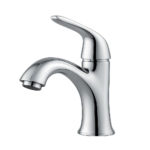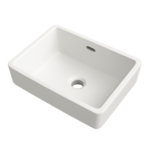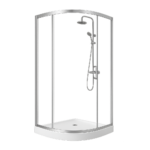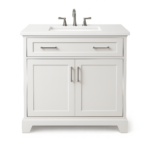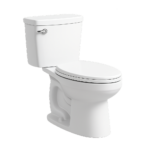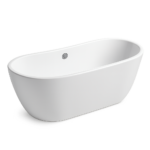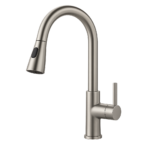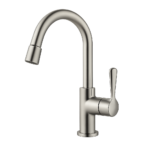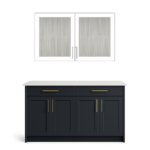Are RTA cabinets cheaper than assembled cabinets?RTA (Ready-to-Assemble) cabinets are typically cheaper than assembled cabinets, but there are several factors to consider when comparing their costs:
Labor Costs: RTA cabinets require assembly, which means you’ll need to invest time and effort or hire someone to put them together. Assembled cabinets come pre-built, saving you the labor costs associated with assembly.
Shipping Costs: RTA cabinets are often shipped in flat-pack boxes, which can be more cost-effective to ship than fully assembled cabinets. However, you may need to consider the shipping costs and any potential damage during transit.
Quality and Materials: The cost difference between RTA and assembled cabinets can vary based on the quality of materials and construction. High-quality RTA cabinets can be more expensive than lower-quality assembled cabinets.
Installation Costs: Both RTA and assembled cabinets may require professional installation, which can add to the overall cost. Ensure that you factor in installation costs when making your comparison.
Customization: If you require custom cabinets, assembled cabinets may offer more flexibility, but they tend to be more expensive. RTA cabinets often come in standard sizes and styles, which can be more budget-friendly if they meet your needs.
Time and Convenience: Assembled cabinets are ready to install right away, while RTA cabinets require additional time for assembly. Consider the value of your time and convenience when making your decision.
Are RTA cabinets high quality?The quality of RTA (Ready-to-Assemble) cabinets can vary widely depending on the manufacturer, materials used, construction methods, and price point. Some RTA cabinets are high quality, while others may be more budget-friendly with lower quality components. Here are some factors to consider when assessing the quality of RTA cabinets:
Material: High-quality RTA cabinets are typically constructed from solid wood, plywood, or medium-density fiberboard (MDF). Solid wood and plywood are generally considered better quality materials than MDF. The choice of material can significantly impact the durability and appearance of the cabinets.
Construction: Dovetail joints, mortise and tenon joinery, and other solid construction methods are indicators of high-quality RTA cabinets. Cabinets with these features tend to be more sturdy and durable.
Finish: The quality of the cabinet finish, including the paint or stain and the sealing process, affects the cabinet’s appearance and longevity. High-quality cabinets should have a smooth and durable finish.
Hardware: The type of hardware, such as hinges, drawer slides, and handles, can impact the functionality and longevity of the cabinets. Quality hardware will operate smoothly and last longer.
Design and Features: Consider the design and features of the cabinets. Some RTA cabinets offer convenient features like soft-close doors and drawers, pull-out trays, and adjustable shelving, which can enhance their functionality.
Manufacturer Reputation: Research the manufacturer’s reputation and read reviews from other customers to get a sense of the overall quality and customer satisfaction with their RTA cabinets.
Warranty: A manufacturer’s warranty is often an indicator of confidence in the product’s quality. Check the warranty terms to see what is covered and for how long.
Are semi-custom cabinets worth the money?Semi-custom cabinets can be worth the money, but their value depends on your specific needs, preferences, and budget. Here are some factors to consider when deciding if semi-custom cabinets are a good investment for your project:
Customization: Semi-custom cabinets offer a higher degree of customization compared to stock cabinets but are more affordable than fully custom cabinets. If you have specific design requirements or unique space considerations, semi-custom cabinets can provide tailored solutions.
Quality: Semi-custom cabinets often offer better quality and more options than stock cabinets. They may use higher-quality materials and construction methods, which can lead to more durable and attractive cabinets.
Design Options: You have more design choices with semi-custom cabinets, including various door styles, finishes, hardware, and features. This flexibility allows you to create a kitchen or storage solution that suits your aesthetic and functional needs.
Fit and Function: Semi-custom cabinets can be designed to fit the exact dimensions of your space. This ensures that you optimize your storage and create a layout that works well for your lifestyle.
Value and Resale: Well-designed and high-quality semi-custom cabinets can add value to your home and may improve resale value. They can make your kitchen or storage space more appealing to potential buyers.
Budget Considerations: Semi-custom cabinets are more expensive than stock cabinets but typically less costly than fully custom cabinets. You should evaluate your budget and determine whether the additional expense is justified by the features and customization options you desire.
Professional Installation: For semi-custom cabinets, it’s often recommended to have them professionally installed to ensure a proper fit and functionality. Be sure to factor in the cost of installation when assessing the overall expense.
Are RTA cabinets cheaper?Ready-to-Assemble (RTA) cabinets are typically cheaper than fully assembled cabinets. There are several reasons why RTA cabinets tend to be more cost-effective:
Reduced Labor Costs: RTA cabinets require assembly, either by the homeowner or a professional installer. This means you save on the labor costs associated with assembling fully constructed cabinets.
Lower Shipping Costs: RTA cabinets are shipped in flat-pack boxes, which are more space-efficient and cost-effective to transport compared to fully assembled cabinets. Reduced shipping costs can translate into cost savings.
Lower Manufacturing Costs: The manufacturing process for RTA cabinets is generally more streamlined and efficient, leading to lower production costs. As a result, these savings are often passed on to the consumer.
Standard Sizes and Designs: RTA cabinets are typically available in standard sizes and designs, which simplifies production and reduces costs. Customization options are limited compared to fully custom cabinets, but this helps keep prices down.
DIY Option: Many homeowners opt to assemble RTA cabinets themselves, further reducing costs. Even if you hire a professional for assembly, it’s often less expensive than having cabinets custom-built or fully assembled.
What are the cons of RTA cabinets?While RTA (Ready-to-Assemble) cabinets offer several advantages, they also come with some potential drawbacks to consider:
Assembly Required: As the name suggests, RTA cabinets need to be assembled. This can be time-consuming and may require some level of DIY skills. If you’re not comfortable with assembly or don’t have the time, you’ll need to hire a professional, which adds to the cost.
Complexity: Some RTA cabinets, especially those with more intricate designs or features, can be challenging to assemble. Instructions may not always be clear, and it can be frustrating if you encounter difficulties during assembly.
Quality Varies: The quality of RTA cabinets can vary widely between manufacturers. Lower-quality materials and construction methods are sometimes used to keep costs down, so it’s essential to research and choose a reputable brand to ensure durability and longevity.
Limited Customization: RTA cabinets come in standard sizes and designs, which may not suit all kitchen layouts and design preferences. Customization options are limited compared to fully custom cabinets, which may be a drawback if you have specific design requirements.
Additional Costs: While RTA cabinets are generally more affordable than fully assembled or custom cabinets, you may incur additional costs for assembly, professional installation, and any modifications needed to fit your space.
Durability Concerns: Depending on the quality of materials and construction, some RTA cabinets may not be as durable as fully assembled or custom cabinets. They may be more prone to wear and tear over time.
Limited Warranty: The warranty on RTA cabinets may not be as comprehensive as that of fully assembled cabinets. Be sure to review the manufacturer’s warranty to understand what is covered and for how long.
Potential Misalignment: If not assembled precisely, RTA cabinets may be more susceptible to issues like doors and drawers not aligning correctly, which can affect their functionality and aesthetics.
What is the best quality of cabinet?The best quality cabinets for your home will depend on your specific needs, preferences, and budget. However, there are several key factors to consider when determining cabinet quality:
Material: Solid wood and plywood are considered high-quality cabinet materials. Solid wood is durable and provides a timeless, classic look, while plywood is strong and less prone to warping and cracking compared to particleboard or MDF (Medium-Density Fiberboard).
Construction: Well-constructed cabinets typically feature dovetail joints, mortise and tenon joinery, and other solid construction methods. These techniques ensure the cabinets are sturdy and built to last.
Finish: A high-quality cabinet finish should be smooth, consistent, and durable. Look for cabinets with quality paint or stain finishes and good sealing to protect against moisture and damage.
Hardware: Cabinet hardware, such as hinges, drawer slides, and handles, should be of good quality to ensure smooth operation and longevity. Soft-close features are often a sign of quality.
Customization: Cabinets that offer customization options, like adjustable shelves, pull-out trays, and specialty organizers, can add to the overall quality and functionality.
Design: Cabinets that are well-designed and tailored to your space and needs can be considered high quality. They maximize storage and provide a functional layout.
Manufacturer Reputation: Research the manufacturer’s reputation and read customer reviews to gauge the overall quality and satisfaction with their products.
Warranty: A manufacturer’s warranty is often an indicator of confidence in the product’s quality. Review the warranty terms to understand what is covered and for how long.
Contact us today for a free design consultation, our team provides free 3D, and layout. Cabinet door samples available upon request.

